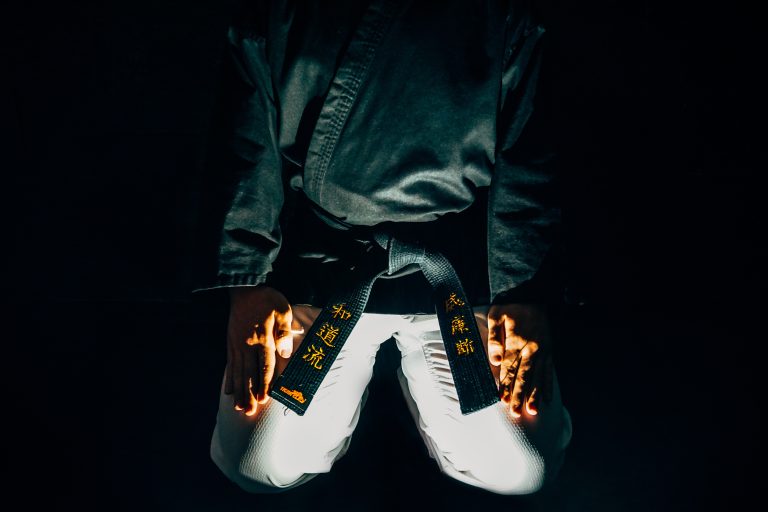Do Karate and TaeKwonDo Have a Common Origin?
Martial arts have been practiced in some form for thousands of years, offering both self-defense and spiritual benefits. While many different “styles” of martial arts exist, the two with probably the biggest overall following are karate and taekwondo. Both are well known for their powerful kicks and spectacular spinning strikes, but do karate and taekwondo have a common origin?
To answer this question, we need to look at the history of both styles. Karate, publicly known today as a Japanese art, is actually believed to have originated in Okinawa. It evolved from kenpo, an Okinawan martial art dating back to at least the 14th century. Kenpo was heavily influenced by Chinese martial arts, brought to Okinawa by merchants and sailors visiting from China and the Ryukyu islands (the part of Japan where Okinawa is located). Karate, as it is known today, was further developed in the island between the 16th and 19th centuries.
Meanwhile, taekwondo – a Korean martial art – is believed to have originated in Goguryeo, one of the most powerful Korean Kingdoms during the 1st century BC. During the Three Kingdoms era (57 BC – 668 AD) in Korea, Koreans developed their own martial arts and Goguryeo developed some of the earliest Korean martial arts techniques. From these techniques, Korea developed a form of martial arts known as taekkyon. After centuries of refinement and influences from other martial arts, taekwondo (along with its “modern” techniques) was born during the Korean War in the 1950s.
So while both karate and taekwondo began centuries ago, they developed independently of each other. The fact that they’re both popular martial arts today is still very much striking – but that simply means that there are certain similarities between them. In terms of their general approach, both karate and taekwondo focus heavily on striking techniques, often combined with grappling and locking. What’s more, their moves are often very well-coordinated and people often refer to them as “dances” of sorts.
From a slightly technical point of view, practitioners of both karate and taekwondo will use some similar stances and movements – like chudan or jodan – as well as a range of offensive and defensive blocks and strikes. The way some strikes are performed may be similar as well – for instance, both styles focus on powerful roundhouse kicks for mid-level striking techniques. Techniques like jump spinning back kick or spinning heel kick are also common for both karateka and taekwondo practitioners.
It seems then, that despite the fact that karate and taekwondo have separate origins, they’ve always had some level of similarities from both a philosophical and technical point of view. The modern iterations of both styles share many different techniques, even if they don’t look identical. So while karateka and taekwondo practitioners rarely spar together (as competition rules differ), it’s clear that these two martial arts share many common attributes that practitioners of either would immediately recognize.
Conclusion
Karate and taekwondo may have had completely separate origins on opposite side of the world millennia ago, but they’ve evolved over time to contain similar ideas and approaches. Whether it’s their philosophy or their technical similarities, karateka and taekwondo practitioners have much in common in spite of their individual backgrounds and histories.
And with many people today practicing both karate and taekwondo at once, it’s now also easy to see just how different styles can come together to offer each other great benefits. Whether you’re a novice or an experienced martial artist, the shared aspects of these two closely linked martial arts deserve your respect – and you can benefit from them no matter what style you choose to practice.
References
– \[1\] Bramlett, J. (n/a). History of Karate. IntheDojo. Retrieved from https://inthedojo.com/types-of-martial-arts/history-of-karate/
– \[2\] White, B. (2021). Taekwondo History: The Origins of Taekwondo Martial Arts. Black Belt Wiki. Retrieved from https://blackbeltwiki.com/taekwondo-history
– \[3\] Unknown (n/a). Karate Basics. Focus Martial Arts Academies. Retrieved from https://www.focusmartialartsacademies.com/about-karate/karate-basics/
– \[4\] Unknown (n/a). Taekwondo Basics: An Overview of this Sportive Martial Art | TaekwondoiSTA. TAOiSTA – International TaekwonDo Organization & Institutions Academy Studio. Retrieved from https://www.taekwondoiota.com/wp/taekwondo-basics/
Frequently Asked Questions About the Origins of Karate and TaeKwonDo
Karate and TaeKwonDo are two popular martial arts disciplines practiced all over the world. These two martial arts forms are known for their impressive and precise techniques, dynamic kicks, powerful strikes and punches, and consistent training regimes. Although they are different in many ways, many people find that the techniques and styles of Karate and TaeKwonDo share similarities. In this post, we’ll answer some of the most frequently asked questions about the origins of Karate and TaeKwonDo and whether they have a common origin.
1. What Is Karate?
Karate is a Japanese martial art that evolved from older techniques of self-defense in the Ryukyu Islands. It is mainly characterized by hand and foot strikes, low stances, and explosive movements. Karate is now a popular sport practiced in many countries around the world.
2. What Is TaeKwonDo?
TaeKwonDo is a Korean martial art that also emphasizes strikes, kicks, and footwork. It is characterized by its high, powerful kicks and footwork, which provides excellent movement and defense. TaeKwonDo has become a popular Olympic sport and a way of life for many of its practitioners around the globe.
3. Do Karate and TaeKwonDo Have a Common Origin?
Karate and TaeKwonDo’s origins are not entirely the same, and they are not directly related to each other. However, some aspects of Karate were included in the development of TaeKwonDo. Both martial arts are related in that they developed from fighting systems that have been around for centuries.
4. What Are the Major Differences Between Karate and TaeKwonDo?
Although these two martial arts forms share some similarities, they are distinct in their techniques and overall approach. There are specific differences between Karate and TaeKwonDo that make them unique martial arts forms.
Here are some key differences:
- Karate is a Japanese martial art, while TaeKwonDo is Korean.
- TaeKwonDo focuses mainly on kicks, while Karate has an equal emphasis on punches and kicks.
- The movements in Karate are often more linear, while TaeKwonDo tends to be more circular and flowing.
- TaeKwonDo uses a lot of jumping and spinning kicks, whereas Karate tends to keep the feet firmly planted on the ground for more powerful strikes.
- Karate emphasizes breaking techniques, while TaeKwonDo puts more emphasis on sparring and board breaking.
5. Why Do Some People Believe There Is a Common Origin for Karate and TaeKwonDo?
There are a few reasons why some people believe there is a common origin for Karate and TaeKwonDo. Firstly, both martial arts developed in Asia, which has a long history of martial arts culture. Secondly, Karate and TaeKwonDo both have similar techniques, stances, and movements. Finally, some scholars believe that TaeKwonDo’s development from the older Korean martial art Taekkyon was influenced by the Japanese martial art of Karate.
6. What Are the Similarities Between Karate and TaeKwonDo?
Although Karate and TaeKwonDo have distinct differences, there are similarities that make them similar martial arts forms:
- Both Karate and TaeKwonDo are ancient martial arts that have been practiced for centuries.
- Both martial arts focus on self-defense, physical and mental conditioning, mental awareness, and discipline.
- Both martial arts emphasize the principles of physical fitness, flexibility, and strength training.
- Both martial arts have an emphasis on striking and kicking techniques, as well as strong defensive fundamentals.
- Both Karate and TaeKwonDo require a disciplined approach to achieve mastery.
7. Which Martial Art Is Better Between Karate and TaeKwonDo?
It is a somewhat pointless debate to measure which martial art between Karate and TaeKwonDo is better. The decision should be based on individual choice, depending on the practitioner’s goal and the kind of martial arts experience that they seek to attain. Both martial arts forms have different strengths and weaknesses, and it ultimately comes down to which one appeals more to the practitioner.
8. What Are the Health Benefits of Practicing Karate and TaeKwonDo?
Learning Karate and TaeKwonDo is not just about mastering fighting skills. These two martial arts can also help you gain several health benefits, including:
- Increased cardiovascular fitness and strength
- Improved coordination, balance, and agility
- Reduced stress levels
- Increased mental toughness, self-confidence, and discipline
- Enhanced focus and concentration
- Opportunities for socialization and camaraderie
Conclusion
In conclusion, Karate and TaeKwonDo are two distinct martial arts forms with similar techniques, principles, and origins. Although they are not directly related, the influence of Karate on the development of TaeKwonDo cannot be overlooked. Both Karate and TaeKwonDo have different strengths and weaknesses, and it ultimately comes down to individual preferences to choose which martial art is suitable for a particular individual. Regardless of which martial arts form one decides to practice, both offer excellent physical, mental, and emotional benefits that will enrich a person’s life.
Inhaltsverzeichnis






